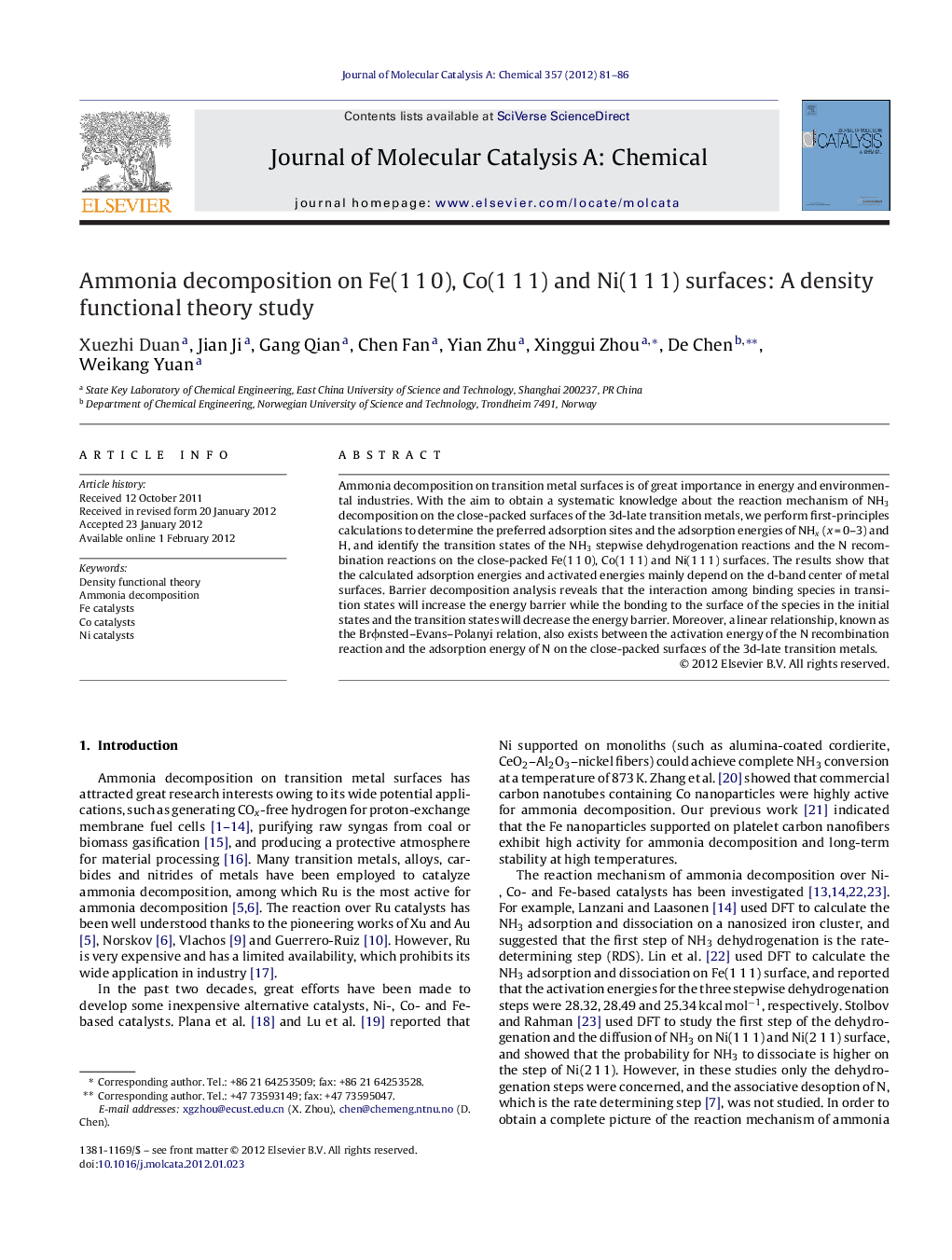| Article ID | Journal | Published Year | Pages | File Type |
|---|---|---|---|---|
| 66127 | Journal of Molecular Catalysis A: Chemical | 2012 | 6 Pages |
Ammonia decomposition on transition metal surfaces is of great importance in energy and environmental industries. With the aim to obtain a systematic knowledge about the reaction mechanism of NH3 decomposition on the close-packed surfaces of the 3d-late transition metals, we perform first-principles calculations to determine the preferred adsorption sites and the adsorption energies of NHx (x = 0–3) and H, and identify the transition states of the NH3 stepwise dehydrogenation reactions and the N recombination reactions on the close-packed Fe(1 1 0), Co(1 1 1) and Ni(1 1 1) surfaces. The results show that the calculated adsorption energies and activated energies mainly depend on the d-band center of metal surfaces. Barrier decomposition analysis reveals that the interaction among binding species in transition states will increase the energy barrier while the bonding to the surface of the species in the initial states and the transition states will decrease the energy barrier. Moreover, a linear relationship, known as the Brϕnsted–Evans–Polanyi relation, also exists between the activation energy of the N recombination reaction and the adsorption energy of N on the close-packed surfaces of the 3d-late transition metals.
Graphical abstract.Figure optionsDownload full-size imageDownload high-quality image (110 K)Download as PowerPoint slideHighlights► N recombination has a higher energy barrier than NHx dehydrogenation steps. ► Fe (1 1 0) surface is blocked by N* and is less active than Co (1 1 1) and Ni (1 1 1). ► A linear BEP relation also holds for Fe (1 1 0), Co (1 1 1) and Ni (1 1 1).
